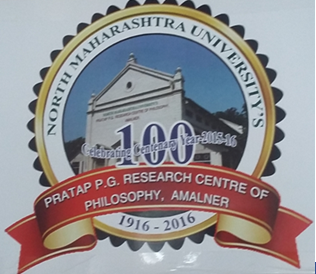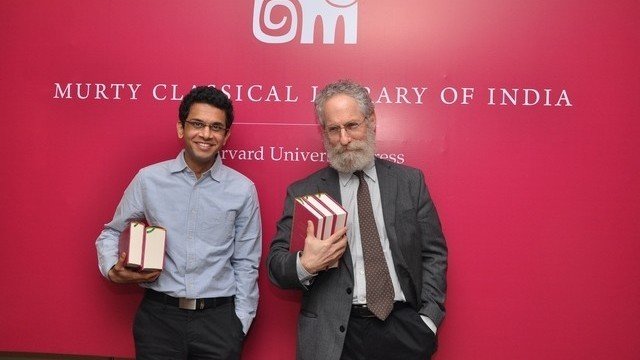I am avid listener of good old radio. If you don’t know, recently, All India Radio launched live streaming of various radio stations via mobile app. You can look at them here. Anyways, I like many programs on radio, and in particular, whenever I get time, I try to listen to Sanskrit News which take place every morning at 6.55 am. I love Sanskrit language, various forms Sanskrit literature, Indian philosophical systems, and other associated areas of Indology. This love and desire brought me closer to international experts such as Prof V N Jha and Prof Ujjwala Jha, who not only taught me(and few other residents in our locality) and also I was fortunate to attend some of his sessions and workshops on various systems of Indian Philosophy.
Today morning when I was tuned to Sanskrit News, I learnt that government is planning to setup Sanskrit university at a place called Navadwip(नवद्विप) in West Bengal. This is very good news. For those who don’t know the significance of Navadwip, let me know explain. This is the place in ancient India, in 13th century, where Navya Nyaya(नव्य न्याय) system was developed as an extension to Nyaya philosophy(Indian Logic). This advanced system has been quite influential and devised a fresh way in interpretation of sentences, through it unique language.
Prof V N Jha and trust run by him Rishi Rina(ऋषी ऋण), has arranged course of this system. I wanted to talk about this here as shared by him.
Introduction
The depth in Indian epistemology was acquired because of serious dialogues among philosophical systems. Over a period of time, by the 10th century AD, a need was felt to develop a precise medium of communication in order to understand one another’s position or point of view to make the dialogue meaningful. That medium goes by the name of Navya Nyaya Language. After the Language took shape, almost all systems of knowledge in India started writing treatises in this very language of Navya Nyaya. As it were, it became a universal language of scientific discourse during medieval period and continues to be so even today in some traditional educational institutions. All our intellectual achievement of the last 1000 years is in the works written in this language.
But our present Sanskrit education programs do not offer any course on Navya Nyaya Language. As a result, all the texts on various knowledge systems are just lying without readers.
We are, therefore, going to offer a Four Level graded course in Navya Nyaya Language and Methodology from 2019. The distribution of the Levels is as follows :
Level-0 : Foundation Course in Navya Nyaya
Level-1 : Introduction to Navya Nyaya Language and Methodology
Level-2 : Navya Nyaya Method of Decoding Language
Level-4 : Navya Nyaya Theory of Decoding Negative Sentences
Structure of the Course
Each level will be offered in two parts-reading of an original Text and a set of lectures elaborating concepts, technical terms, theories and issues of the system.
Duration of Each Level
10 to 12 days
Who can Join?
Anyone interested in Indian Wisdom and in learning and knowing Indian intellectual, philosophical and spiritual culture. No background of Sanskrit is a pre-requisite.
Advantage
All those who are interested in Philosophy, Mathematics, Symbolic logic, Linguistics, Law, Aesthetics, Communication studies, and so on or working in the areas of Language technology, Artificial Intelligence, Machine Translation, System Science and the like can derive insights from this course.
Donation to the Rishi Rina Trust to meet the running cost of the programs:
Students Rs.3000/- per level.
Non-students Rs.5000/- per level.
Donation is non-refundable and does not include Lodging & Boarding charges. Donations should be paid through electronic bank transfer system to the following account ( Participation will be confirmed only after the payment of donation) :
Name : Rishi Rina Trust A/C No. 60285750369 Bank : Bank of Maharashtra Branch : Pimple Saudagar (1443) Address : Dwaraka Lords, Pimple Saudagar, Pune-411027IFSC Code : MAHB0001443
You can complete the registration and send an email to the following :
ananth.tn2003@gmail.com vnjha1946@gmail.com ujjwalajha@yahoo.co.in
Course Fees
Nil
The Trust will provide the Reading material.
Level One : Introduction to Navya Nyaya Language and Methodology
Venue : Amrita University, Coimbatore, Tamil Nadu, India. (A beautiful learning and spiritual environment at the base of a Hill)
Dates : 23rd to 31st December, 2019.
Intake : 50 participants can be accommodated on first-come-first-served basis.
The lodging and boarding charges should be paid directly to the University on arrival at the Venue. For further details please remain in touch with the co-coordinator of our program Mr. Ananath (ananth.tn2003@gmail.com, mobile no. 07975539644).
Please take advantage of this learning opportunity of learning from international expert such as Prof V N Jha! And incidentally, tomorrow(Aug 15, 2019) is Sanskrit Day(संस्कृत दिवस). Please my blog on this topic here.











